



Lozmoid
gamer level 9
59483 xp
59483 xp
followers
55
55
Use my invite URL to register (this will give me kudos)
https://boardgaming.com/register/?invited_by=lozmoid
profile badges




recent achievements

Strategist
Submit 5 game strategies (a type of game tip) and get 20 positive ratings.
Submit 5 game strategies (a type of game tip) and get 20 positive ratings.

Explorer - Level 7
Earn Explorer XP to level up by completing Explorer Quests!
Earn Explorer XP to level up by completing Explorer Quests!

El Dorado
Explore select games by completing a series of exploration actions ...learn more »
Explore select games by completing a series of exploration actions ...learn more »

Intermediate Reviewer
Review 8 games and receive a total of 380 positive review ratings.
Review 8 games and receive a total of 380 positive review ratings.
Player Stats
Critic (lvl 2)
645 xp
645 xp
Explorer (lvl 7)
12711 xp
12711 xp
Professor (lvl 3)
1082 xp
1082 xp
Reporter (lvl 5)
3353 xp
3353 xp
About Me
I am an amateur game designer and I like to create new concepts based on my favourite video games, films etc. I love board games and have a ton of them, most of which are not on this site yet. I really like strategy games too; anything Axis & Allies or Settlers of Catan! Themes I enjoy are War, Horror, Trading, Resource Management.






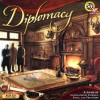






















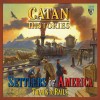





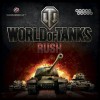

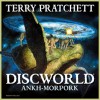




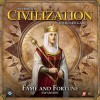

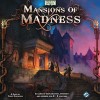


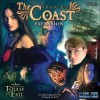


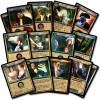



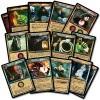

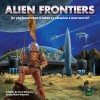

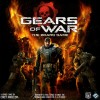
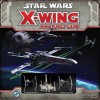
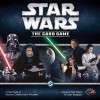
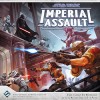


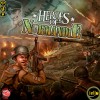


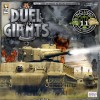



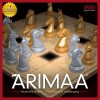
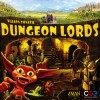






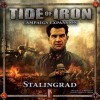

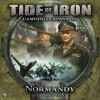

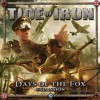

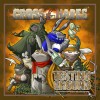
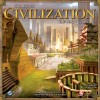


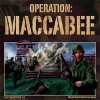





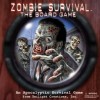

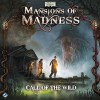
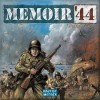




Axis & Allies Pacific 1940
Okay, let me tell you about this awesome game! It is a remake of the original Axis & Allies Pacific title released by Avalon Hill in 2000, but this version is SO much better in many ways. However, it is an advanced level A&A game and I would really only recommend it to players who already know the main game rules. Basically, this is a two-sided conflict and can be played by up to 5 players: the United States, United Kingdom, ANZAC and China constitute the Allies (the good guys), and Japan represents the Axis (the bad guys). So it’s a case of 4 against 1 which initially may seem a bit unfair, but when you see how much forces Japan begins the game with you’ll be feeling sorry for the Allies!
If you’re reading this review then the chances are that you are already a fan of the game series and know how to play. If you’re new to the game, then I would recommend you have a little read of my review of the Axis & Allies 1941 game, which gives an overview of the game rules and what you need to do on your turn. The review can be found here: http://boardgaming.com/games/board-games/axis-and-allies-1941 but basically, Axis & Allies is a combination of strategic manoeuvre using elements of luck to resolve battles.
Okay, so let’s begin. This game is set in the spring of 1940. Japan and China are the only two powers who are at war with one another, as they had been since the mid-1930’s. Powers at war may attack each other, and powers not yet at war may not. The United Kingdom and ANZAC are keeping a wary eye on Japan in case she makes any unprovoked aggressive moves in the South Pacific Ocean, either against them or against the vulnerable undefended colonies of the French and Dutch. The United States is (for the time-being) neutral and trying to stay out of the war being waged in Europe (see Axis & Allies Europe 1940). But the beauty of this game is that it’s completely open for you to do as you wish diplomatically with your chosen power. So you can elect go to war with the enemy immediately or bide your time in order to build up stronger positions for your forces!
The order of play is
Japan
United States
China
United Kingdom
ANZAC
Victory is achieved by the Axis (Japan) if it controls 6 Victory Cities on the map for an entire round of play whilst still controlling its capital (Tokyo). The Allies win if they control Tokyo, as well as at least one other Allied capital, for an entire round of play. This can take many rounds of play to decide. Japan starts off with more combat units on the board than the Allies and must attack quickly to achieve her goals. The Allies begin the game weaker militarily but have more economic strength than the Axis, which allows them to build up slowly over time.
There is no Research & Development phase in this game and so players won’t be able to gain any technologies; however, when you combine this game with Axis & Allies Europe 1940 the technology rules are used. Anyway there is much to explain so I’ll go through the game components first:
First of all the game board comes in two parts that you put together and it is pretty large (35˝ x 32˝ to be exact). There are many more territories and sea zones in this version, making it take longer to move around as well as opening up many different tactical possibilities. A&A veterans will love this. China is massive and the Pacific Ocean is vast. One minor drawback is that you don’t get many dice but other than that, everything else is top notch.
—————-
There are two new combat units in the game: Mechanised Infantry and Tactical Bombers. Let me tell you a bit about them:
Mechanised Infantry – Attack 1, Defend 2, Move 2, Cost 4
These are basically infantry units in armoured vehicles (or halftracks). They were used in conjunction with armoured units in the war and would often spearhead the main thrust in offensives, protecting the tanks from enemy infantry and antitank units.
In the game, they attack and defend like regular Infantry units but they have added mobility and hence their increased cost. They can always move two spaces in either combat or noncombat move phases, but if paired 1-for-1 with one of your Tanks then they can blitz with that Tank. As long as your Tank and your Mech Infantry begin their movement together in the same space, they can move two spaces together into enemy territory in all the same ways as a normal Tank (without the Tank, your Mech Inf would have to stop in the first enemy territory it entered). Their attack is also increased to 2 when paired 1-for-1 with one of your Artillery units, just like regular Infantry. Mechanised Infantry are extremely useful for controlling vast areas of land (because of their increased mobility), and in this game with its many extra territories, they do just that.
Tactical Bombers – Attack 3, Defend 3, Move 4, Cost 11
These are a cross between a Fighter and a Bomber in terms of their size and capability, and were sometimes referred to as ‘dive bombers’ or ‘torpedo bombers’ back in the war. They were basically designed to attack surface targets, namely enemy armoured units or ships; whereas the bigger bombers (now renamed Strategic Bombers in this game) could carry a much heavier payload and were used more for bombing enemy industrial areas/military facilities.
In the game, Tac Bombers have the same move and attack values of the regular Fighter unit; however they don’t quite defend as well (defend 3 as opposed to 4 of the fighter plane). So, you could think of them as tanks but with more range! However, where these units really come into their own is when they attack with a combination of other units: when one of your Tactical Bombers is paired 1-for-1 with one of your Tanks or Fighters, its attack value is increased to 4! Now they have practically become Strategic Bombers and are very useful for eliminating enemy units, especially their navy.
And if that wasn’t enough your Tac Bombers can also perform strategic bombing raids on enemy Air and Naval Bases (although not Industrial Complexes). However, the damage they do is not as heavy as the Strat Bombers. And just like Fighters, they can take off from and land on friendly Aircraft Carriers. They may also be scrambled from friendly Air Bases in order to intercept attacks on your naval units in adjacent sea zones (or against enemy amphibious assaults), as well as participate in the defence of your facilities in the case of strategic bombing raids. A versatile air unit with multiple uses.
—————-
This game also comes with a new range of other non-combat units which are referred to collectively as ‘facilities’. They are: Major Industrial Complexes, Minor Industrial Complexes, Air Bases and Naval Bases. They are represented by small cardboard counters, as opposed to actual plastic playing pieces. The Industrial Complex counters have a factory symbol with either a 10 (major) or a 3 (minor) printed on them. The Air and Naval Base counters have symbols of a fighter or an anchor on them respectively. You get plenty of these counters but feel free to use any other pieces to represent them on the game board (I still use my grey plastic factories from earlier A&A games for Major ICs; and for Minor ICs I use the little green houses from Monopoly which I have painted grey – and they look fantastic). So, what do these units do?
Industrial Complexes behave in much the same way as they did in early versions of the game. They cannot be built on islands! They can still be bombed by Strategic Bombers and they can receive up to 3 or 10 damage counters (for minor/major ICs respectively) before they become made redundant and cannot produce any more units. In fact, they can produce one less unit for every damage counter on them. They can receive a maximum of double the number of damage counters in total (6 or 20) and any extra damage counters received after this maximum are discarded. Here are the details:
Major Industrial Complexes – Attack 0, Defend 0, Move 0, Cost 30
Yes, they’re very expensive! But these factories can produce up to 10 units per turn (hence the 10 printed on the counter), providing you can afford them. However, they can only be built in your own original territories that you started the game with, that have an IPC value of 3 or higher on them. They cannot be built in captured enemy territories. Most of the major powers in the game start with one of these in their capitals.
Minor Industrial Complexes – Attack 0, Defend 0, Move 0, Cost 12, Upgrade Cost 20
These factories can be built in any territory on the map, including those captured from an enemy power, as long as they have an IPC value of 2 or higher on them. They can only produce 3 new units per turn, however. Minor ICs can also be upgraded into Major ICs during the Purchase New Units phase for the cost of 20 IPCs, but only if they were sited on a territory worth 3 IPCs or more (the upgrade becomes active during the subsequent Mobilize New Units phase). So it works out more expensive to buy a Minor IC and then upgrade it into a Major on a subsequent turn, although at least that way you could spread the cost over two turns…
Air & Naval Bases are really cool, conferring many benefits not only to you but also to any powers in your alliance. At 15 IPCs, they’re not cheap but they may be built on any territory or island, regardless of its IPC value.
Air Bases Attack 0, Defend 0, Move 0, Cost 15
Air Bases are vital to the defence of the territory they are situated in as well as any adjacent sea zones, because the allow up to 3 friendly Fighters and/or Tac Bombers to be Scrambled from them in order to engage the enemy. Normally, Fighters & Tac Bombers in a territory without an AB would only be able to defend in that territory. But if there is an AB present, then they may also be scrambled to defend in any neighbouring sea zones as well. Let’s suppose an enemy player was conducting an amphibious assault against your territory with the AB – any of your or a friendly power’s Fighters & Tac Bombers stationed there could elect to either defend in the sea zone or the territory (each aircraft must choose and cannot do both).
Air Bases also give +1 Move to all air units stationed in the territory. So basically, Fighters & Tac Bombers go up to 5 movement; whilst Strat Bombers go up to 7. This range bonus is only given whenever an air unit takes off from the AB territory, in either combat or noncombat movement. It is very useful! This increased range has a great impact on the game, allowing your air units to reach spaces and conduct attacks that they wouldn’t normally be able to.
It should be noted that an Air Base that has 3 or more damage counters cannot provide any bonuses; i.e. it cannot award the +1 movement or allow air units to scramble.
Naval Bases Attack 0, Defend 0, Move 0, Cost 15
Naval Bases behave in much the same was as Air Bases in that they give the +1 Move to any friendly sea units that begin their combat move or noncombat move in the sea zone that has an adjacent territory or island with an active NB on it (see above). So all of your sea units that start their move at a friendly NB now have 3 Move, and so can outrun enemy fleets trying to evade yours!
They also immediately repair any damaged Capital Ships (Aircraft Carriers and Battleships) at the beginning of your Purchase New Units phase. If any of your Aircraft Carriers or Battleships are damaged at this point – having received a hit in a previous combat – they may now be fully healed for free (no IPC cost). This is very useful too.
—————-
Let me tell you a bit about some of the new concepts in this game. First of all, as it is set in 1940 and World War II has not yet swelled to a global scale, there are diplomatic conditions that exist for each power in the theatre. There are rules and restrictions for powers who are on opposite sides, but who are not yet at war with one another. Whilst not at war, your power is in a state of neutrality and as such, your sea units may share sea zones with the sea units of other powers – without a conflict happening. However, you may not move your land air units into other powers’ territories (even if the owner of those territories is on your side of the conflict but not yet allied to you).
Japan begins the game only at war with China but may declare war on the United Kingdom, ANZAC or the United Sates on any of her turns. Declaring war is done at the beginning of the Combat Move phase and you may attack immediately. So, you can spend some turns getting your combat units into advantageous positions ready for your command to strike. There is much anxiety as the separate powers anticipate an attack by an aggressor thereby constituting a state of war!
The United Kingdom and ANZAC are aligned together politically. That means if one of them declares war on Japan, then the other will automatically be at war with Japan also. The same is true if Japan declares war/attacks one of them; the other will automatically join on their side. However, a state of war between Japan and the UK & ANZAC will have no effect on the position of the United States.
The United States begins the game completely neutral and may not declare war on Japan until the Collect Income phase of her third turn, which is an exception from the normal rules for declaring war. However, when she does go to war with Japan, her economy doubles overnight as her industrial might kicks in! Watch out Japan…
—————-
Your Aircraft Carriers and Battleships are now known as ‘Capital Ships’. They can take two hits in combat before they are destroyed, but they do not automatically repair themselves at the end of the Conduct Combat phase. In order to be repaired you have to get these ships to a friendly operational Naval Base, and even then the repairs can only actually take place during your Purchase New Units phase – although it is free to do this. So it’s a bad idea to suffer hits to your capital ships whilst out at sea and a long way from port. Battleships suffer no penalties from being damaged (having taken 1 hit) and may still conduct Shore Bombardment. Aircraft Carriers, however, are a different matter. A damaged Aircraft Carrier may not allow friendly Fighters or Tac Bombers to take off or land on it. This can be a very bad thing indeed as it can leave the vessel stranded without the protection of its air units. Also, if there were any friendly air units that were cargo when your Carrier took a hit, they are now trapped on board and cannot take off until the Carrier is repaired. Whatever you do, don’t let your Aircraft Carriers take damage! Not only that, but in this game Carriers have NO ATTACK VALUE.
—————-
The separate powers in the game still get their individual National Objectives which they will need to achieve in order to be awarded extra income at the end of their turn. Some of these are harder to get than others. China only has one and that’s to keep the Burma Road open. Four of the territories in Southeast Asia constitute the Burma Road and if Japan attacks and takes any one of them, then the Burma Road is cut – severing China’s aid from the United Kingdom based in India. If the Chinese can keep these territories clear of Japanese units then they achieve their National Objective and gain an extra 6 IPCs per turn for it. Very useful indeed. Not only that, but they can also not buy Artillery Units and place them in any of their territories! Some powers achieve their National Objectives whilst still at peace and others only gain them when they enter into war; it is different for each power. I won’t list them all here.
—————-
Just as in the original A&A Pacific, you can conduct Convoy Disruptions on your enemy’s economy in this game. The map has convoy symbols located in many of the sea zones, denoting where Convoy Disruption can be done. To take advantage of this opportunity you must get your warships and planes into these zones on your turn. The actual disruption takes place on your enemy’s turn, during their Collect Income phase. What happens is, your surface warships (excluding Aircraft Carriers as they have no attack value) may roll one die each, and your Submarines or carrier-based aircraft may roll 2 dice each. All rolls of 4-6 are ignored. Then you just add up all the 1’s, 2’s & 3’s to get the total figure. This is the amount of IPCs that the enemy power must surrender back to the bank. However, there’s a catch – the total figure must not exceed the total IPC value of all adjacent territories combined. So, say if you were convoy disrupting a sea zone that had two adjacent territories worth 1 and 3 IPCs respectively, the maximum you could disrupt the enemy for would be 4 IPCs.
—————-
Also just as in the original Pacific game, the Japanese player may conduct Kamikaze attacks against enemy sea units that move into special sea zones with the Kamikaze symbol on them. Japan gets 6 Kamikaze tokens at the start of the game and that’s all she has so use them wisely. How do they work? Well, they’re basically a free attack roll against an enemy ship(s) of your choice. You select the target sea unit, state how many Kamikaze tokens you wish to use, and then roll that number of dice looking for a roll of a 1 or a 2. Any hits scored remove that sea unit immediately! Capital Ships can still take two hits, remember. If you’ve score more hits then you needed to take a ship out then you can’t carry over those hits onto another target; the excess are wasted. After all Kamikaze attacks have been resolved and casualties removed, the regular naval battle commences. I tell you, Kamikaze attacks are a big deterrent to the Allies!
—————-
To summarise then: The piece sculpts and game map are beautiful, the rulebook is clear and concise. Again, this version is not for beginners and there are a lot of new rules to remember so even more experienced players may need to play it a few times to get the hang of it. But the levels of complexity as well as the feelings of victory brought on by sheer diplomatic and strategic skill are very rewarding and gratifying. I’m going to give this game a solid 9/10 (even though my initial impression was 7). They couldn’t have done it much better if they tried and I personally believe this to be an excellent strategy gaming experience.